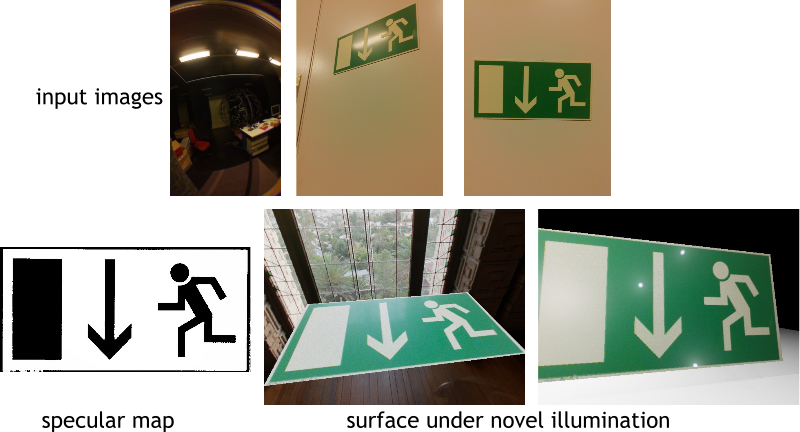Master's Thesis
Tobias Häußler
Ulm University, Germany, 2012

Measuring the bidirectional reflectance distribution function (BRDF) of surfaces usually is a complex procedure that demands for calibrated setups and high-quality cameras. This work investigates how to simplify the process by using cameras of mobile devices. For this purpose, an approach for reconstructing normals and spatially varying reflectance of a textured, almost planar surface from two images taken under distant, known illumination is presented. The illumination is measured by using a camera equipped with a fish-eye lens to capture the environment in a single shot. Diffuse shading is extracted from the input images by using a bilateral filter to extract details in image intensity that are not contained in chromaticity. The normal map is reconstructed with a shape from shading algorithm based on a low-order spherical harmonics approximation of the environment. BRDFs are represented by a linear combination of basis materials. This allows to estimate its coefficients with linear least-squares optimization. Two approaches are presented to handle spatially varying reflectance. In the first, surface points are clustered by analyzing residual histograms of random models generated from a RANSAC-like sampling process. In the second, diffuse and specular components of the BRDF are independently estimated, which allows to recover a texture with albedo color per pixel and a specular component shared by multiple surface points. Furthermore, differences between the two input images are analyzed in order to separate the surface into glossy and matte regions.